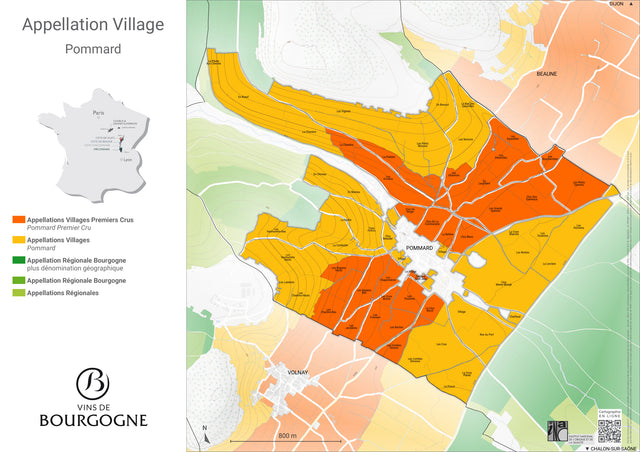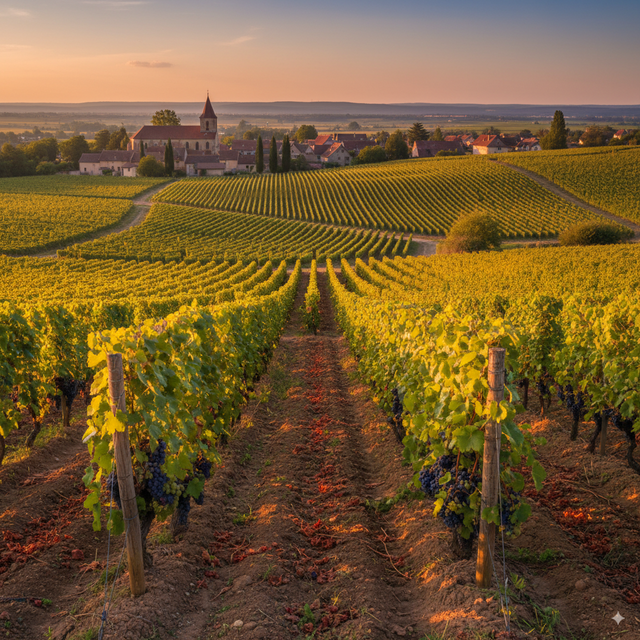Burgundy, in eastern France, encompasses several subregions, but it is the Côte d'Or that is home to many of the world's most expensive and revered wines. The region, primarily a single east-facing slope, has mixed limestone soils that vary dramatically from village to village and even vineyard to vineyard. White wines, crafted from Chardonnay, range from rich and opulent to lean and intensely mineral, while Pinot Noir produces silky, perfumed red wines of exceptional finesse and complexity. Centuries of winemaking tradition have resulted in every plot being meticulously recognized and scrutinized, making the Côte d'Or a true capital of terroir.
Burgundy - Cote d'Or
Newest Arrivals
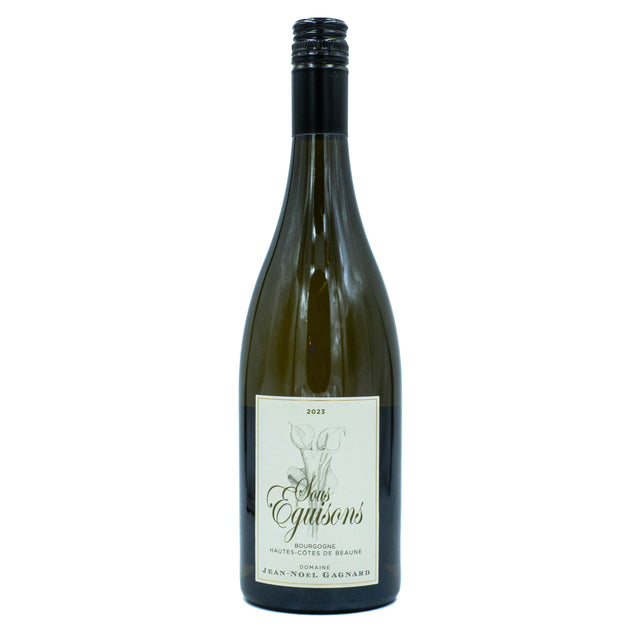
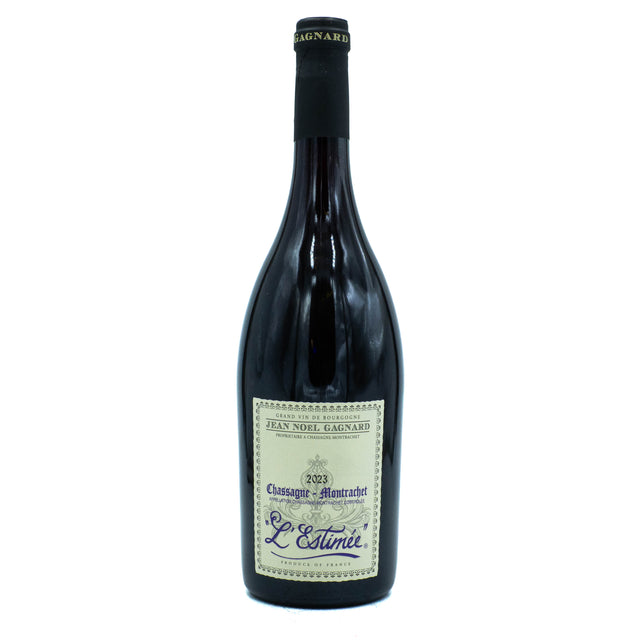
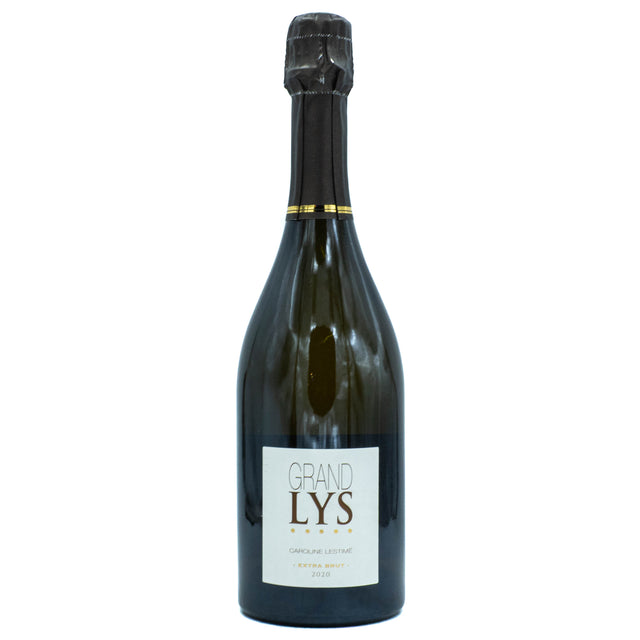
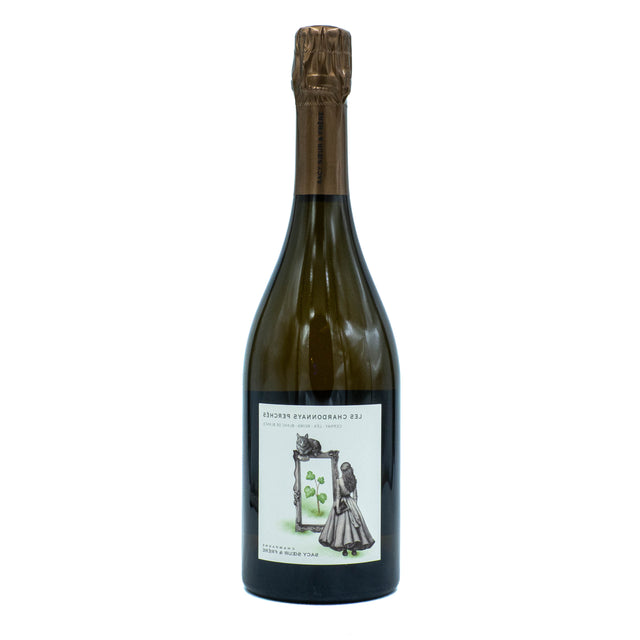
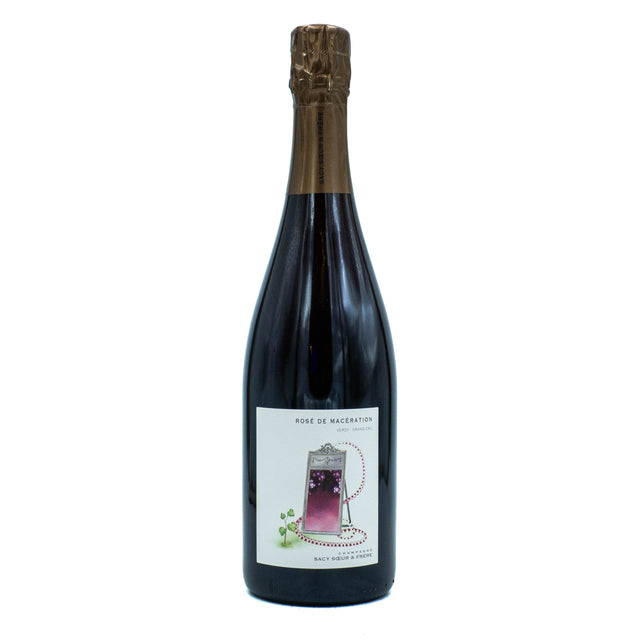
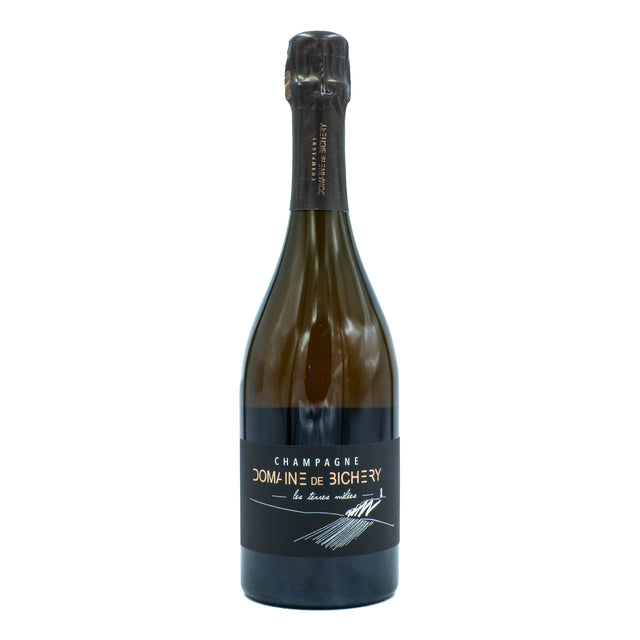






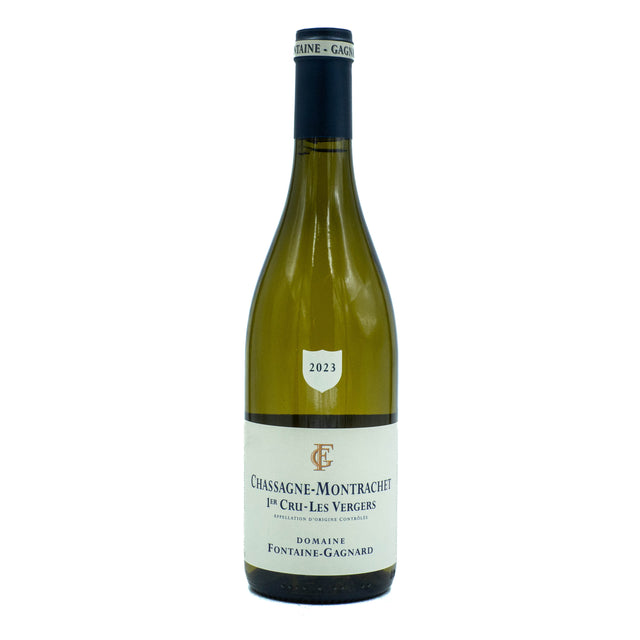

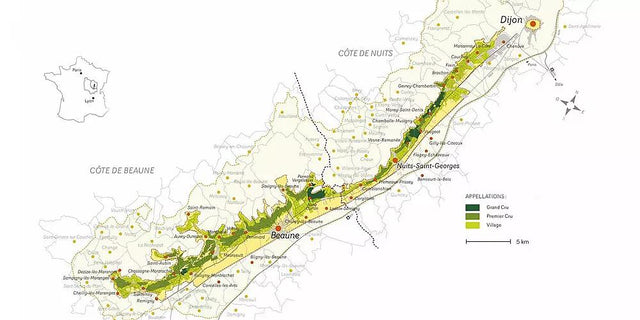
Major Villages of the Cote de Nuits
Marsannay, the northernmost major village of the Côte de Nuits, is a dynamic appellation known for its diverse wines, and it is on the cusp of a great change in its classification, as there are plans to elevate certain lieux-dits to Premier Cru status in the near future. The village, and neighboring Couchey which uses the Marsannay name, is unique in that it produces all three colors of Burgundy. While historically known for its rosé, red wines from Pinot Noir and white wines from Chardonnay are gaining popularity. The soils are primarily limestone and marl, which give its wines a distinct mineral character. The top vineyard sites include La Charme Aux Prêtres and Clos de Jeu, though the whole of the Marsannay slope gives wines of a real sense of place. The history of Marsannay is somewhat unique, as it has been slowly moving toward the same classification as the rest of the Côte de Nuits. In the past the vineyards were heavily planted with Gamay, but that was almost entirely removed in favor of Pinot Noir. While many wines from the village can be light and easy to drink, the best show a great deal of structure and complexity that can last for many years. Top producers in the region include Bruno Clair and Sylvain Pataille, who exemplify the village's increasing focus on quality and terroir expression.
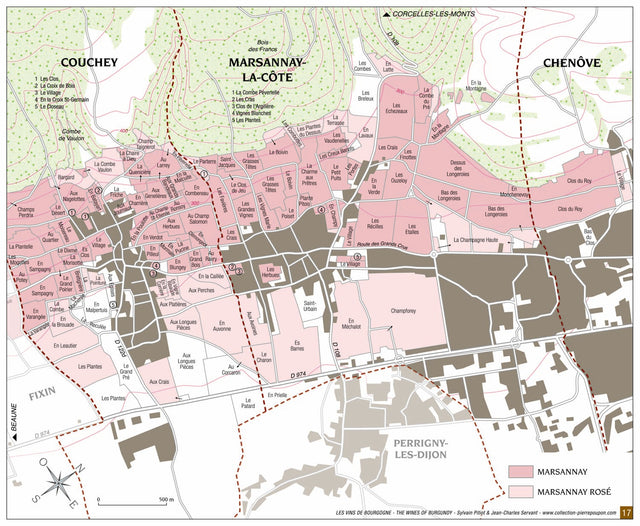
Fixin, a village bordering Gevrey-Chambertin, is a northern Côte de Nuits appellation that is often seen as its more rustic cousin, though it is beginning to gain more recognition for the quality of its wines. Historically, the village was largely planted to Gamay and other lighter varieties, however it is now focused more on Pinot Noir, and some Chardonnay. Though often overlooked due to it's proximity to the more famous Gevrey, the wines from Fixin can be expressive, complex and have a great sense of terroir. The village's vineyards are situated mostly on the lower slopes, where the soils are a mix of alluvium and clay. The village has several Premier Cru sites such as Les Hervelets, Clos du Chapitre, and Les Arvelets, which were all once separate vineyards in the area and are now coming into their own as quality sites. They are situated on the mid and upper slopes and represent a higher quality of terroir. Producers in Fixin are now working to promote the quality and character of their wines, which can be very similar to that of Gevrey, though typically with less power and more elegance. Top producers include Bertheau-Gerbet, as well as Clos Napoleon (the negociant side of Domaine Gelin), though more and more exciting producers are making great strides in the area.
Gevrey-Chambertin, a village known as the 'King of Burgundy,' is located in the northern Côte de Nuits and is renowned for its powerful, structured, and long-lived Pinot Noir wines. The village boasts a remarkable concentration of Grand Cru vineyards, including the famed Chambertin and Clos de Bèze, as well as other notable examples like Mazis-Chambertin, Charmes-Chambertin, and Griotte-Chambertin. These sites have a long history of being highly sought after, and are the pinnacle of what the area has to offer. In addition to its Grand Crus, Gevrey is also known for its numerous Premier Cru vineyards, most famously Clos Saint-Jacques, which is a walled vineyard that is considered by many to be as good as any Grand Cru. The soils in Gevrey are typically a mix of clay and limestone, with varying degrees of iron content. This terroir, combined with the village's slightly more inland climate than Fixin, contributes to the intensity and structure of its wines, giving them a power that is often more notable than the villages nearby. Gevrey-Chambertin is a village with a long history of viticulture and the producers there are some of the most well-known in the world. Top producers include Armand Rousseau, as well as Claude Dugat, and Domaine Trapet, all of whom exemplify the region's commitment to excellence.
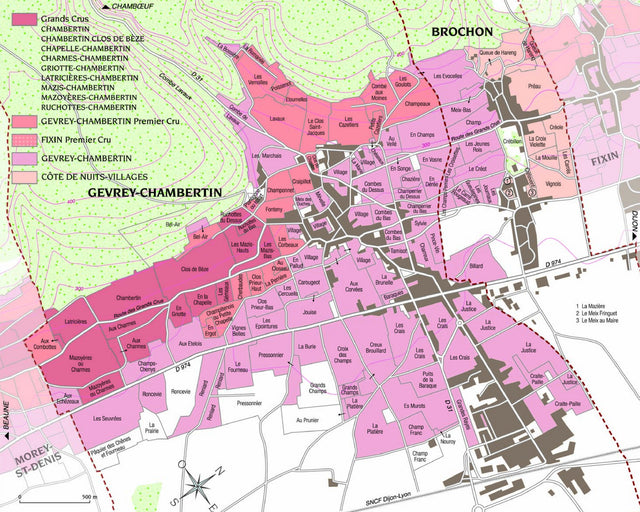
Morey-Saint-Denis, a village often described as a bridge between Gevrey-Chambertin and Chambolle-Musigny, produces wines that are both powerful and elegant, often finding a balance between the two villages’ styles. The village is home to several Grand Cru vineyards, including the iconic Clos de la Roche and Clos Saint-Denis, both known for their structure, complexity, and age-worthiness, as well as others, such as Clos de Lambrays and a piece of Bonnes Mares. The village's vineyards lie on a hillside that slopes down toward the Saône river. Its terroir is varied, though the soils are generally characterized by a mix of limestone, clay, and marl, and they produce wines with structure, a notable minerality, and an expression of dark fruit notes. There are a number of Premier Crus that add an incredible dimension to the area, and are considered by many to be as good as any in the region. The village of Morey is often described as more quiet and laid back than its illustrious neighbors, and its wines have a character that is both compelling and unique. Notable producers include Domaine Dujac, known for its modern approach and early adoption of whole-cluster fermentation, Domaine Ponsot, a traditional estate that is now being run by their highly experimental fifth generation, and Cecile Tremblay, who also has parcels here and is known for a meticulous style and a commitment to purity.
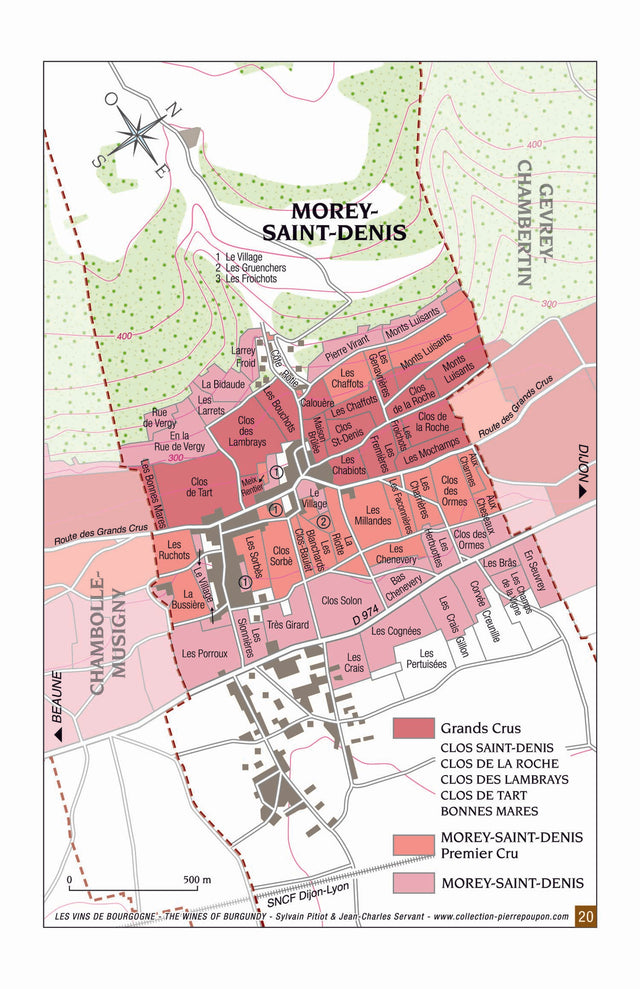
Chambolle-Musigny, a village often described as the most elegant and refined of the Côte de Nuits, is renowned for its delicate, perfumed Pinot Noir wines. The village boasts two Grand Cru vineyards: Musigny, known for its complexity and finesse, and Bonnes-Mares, which while technically partially within Morey-Saint-Denis, has a style that is very much in line with the overall characteristics of Chambolle. These sites are some of the most sought-after in Burgundy, and represent the pinnacle of what the area has to offer. In addition, there are numerous Premier Cru vineyards, most notably Les Amoureuses, which is often cited as one of the most romantic and beautiful wines in the world, and Combe d'Orveau, a small, steep site known for its intensity and structure. The soils in Chambolle are primarily limestone, with a topsoil that is often shallow and rocky, resulting in wines that are typically lighter in body than those from Gevrey-Chambertin or Morey-Saint-Denis. The wines of Chambolle are celebrated for their silky texture, floral aromatics, and exceptional finesse, while also showing a precise minerality. Notable producers in the area include Ghislaine Barthod, known for her old-vine expressions of the village terroirs, Georges Roumier, one of the most iconic producers in the region and who makes a singular version of the Chambolle-Musigny, and J.F. Mugnier, who has holdings in both the Grand Crus and also in the Les Amoureuses 1er cru vineyard, and is known for his precision and elegance.
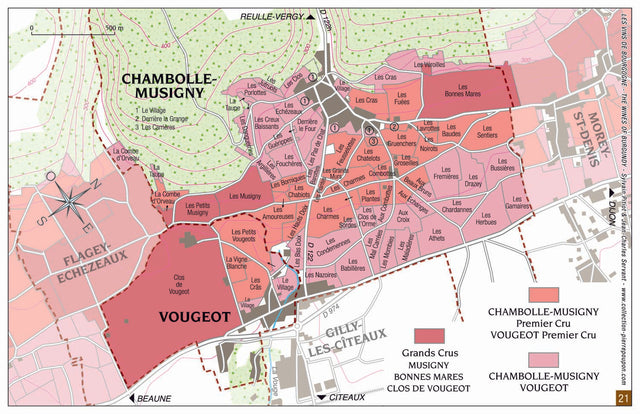
Vosne-Romanée, often considered the jewel of the Côte de Nuits, is a village renowned for producing some of the most elegant, perfumed, and sought-after Pinot Noir wines in the world. The village is famed for its concentration of Grand Cru vineyards, which form a sort of a ring around the lower portion of the commune, including the iconic Romanée-Conti, La Tâche, La Romanée, Richebourg, Romanée-Saint-Vivant, and La Grande Rue. These sites, many of which are monopoles (wholly owned by a single producer) are known for their incredible complexity and age-worthiness. While not as well-known for its Premier Crus, there are many that are also highly sought after such as Les Suchots, Les Beaux Monts, and Malconsorts, all of which tend to have a power that can rival the nearby Echezeaux Grand Cru. The soils in Vosne-Romanée are primarily limestone and clay, with a variety of different expressions throughout the various sites. The wines of Vosne-Romanée often display an incredible silky texture, with complex aromatics that can range from red and black fruit to floral, spice, and earthy notes. The village has a clear focus on elegance and refinement rather than the raw power of Gevrey, though the intensity is clear. Notable producers in the area include Domaine de la Romanée-Conti, one of the world's most famous and sought-after estates that owns the bulk of the Grand Crus, Domaine Leroy, known for its uncompromising approach to biodynamic viticulture and intensely concentrated wines, and Henri Jayer, a legendary figure who produced some of the most iconic and sought-after wines from the village and who's influence is still felt today in the region.
Nuits-Saint-Georges, a village at the southern end of the Côte de Nuits, is known for producing robust and structured Pinot Noir wines, that are often more powerful than those from its northern neighbors. The appellation is known for its many Premier Cru vineyards, notably Les Saint-Georges, which is the most famous of the villages vineyards and its name is now used in the villages own name. Though no Grand Crus exist here, there are a number of other 1er Crus, such as Aux Boudots, Les Vaucrains, and Les Cailles, which are also highly sought after. The soils are generally clay and limestone, and are relatively consistent across the various vineyards. The wines are known for their intensity and structure, often with notes of dark fruit, earth, and spice. They typically have a greater level of tannin than wines from the more northern communes in the Côte de Nuits. The village also produces a small amount of white wine, though the red wines are the clear focus. Nuits-Saint-Georges is known for having a variety of top winemakers and a style of winemaking that is often more traditional, using a whole cluster style of vinification. The notable producers of the region include Robert Chevillon, Domaine de L'Arlot (an estate that also has Monopole 1er crus within the village), and Henri Gouges, all of whom exemplify the region's commitment to excellence, and who produce wines that are excellent examples of this region and its often overlooked character.
Major Villages of the Cote de Beaune
Beaune, a small town of 20,000 inhabitants, is often called the capital of the Burgundy wine world and a key center for exploring the Côte de Beaune. It is also the heart of the grand traditional négociant houses, including Bouchard Père & Fils, Chanson, Drouhin, and Louis Jadot, all with historic headquarters within the city walls. While Beaune itself does not possess any Grand Cru vineyards, it is notable that approximately 75% of its total vineyard area is classified as Premier Cru, a very high proportion. The vineyards surrounding Beaune are characterized by gentle slopes and a diverse terroir with varied expressions of clay and limestone soils. Among the most acclaimed Premier Crus is Clos des Mouches, a vineyard known for its slightly higher elevation and ability to produce both exceptional red and white wines, famously made by Domaine Drouhin. Les Grèves is another highly regarded Premier Cru, known for yielding wines with elegance and finesse. Beaune is also home to the historic Hospices de Beaune, whose annual wine auction is a significant event in the wine world. While large négociant houses have historically shaped Beaune's wine identity, smaller, newer producers such as Benjamin Leroux are contributing to a more diverse and evolving wine scene within this historic appellation.
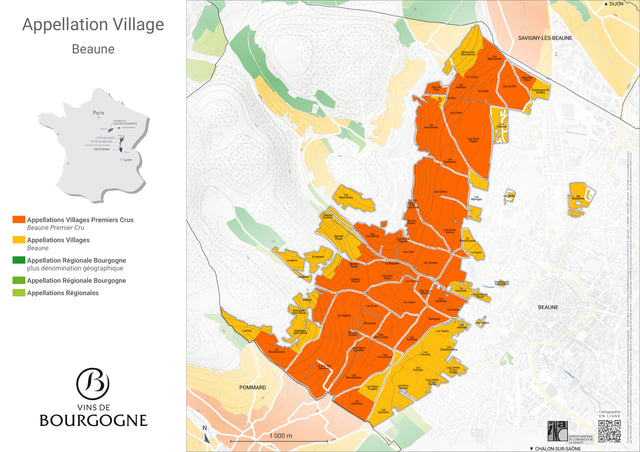
Pommard, located just south of Beaune, is a village solely dedicated to the production of red wines, often described as more powerful and rustic compared to the elegance found in other parts of the Côte de Beaune. Pommard has no Grand Cru vineyards, but its Premier Cru sites are highly regarded for their robust character. The terroir of Pommard is defined by iron-rich clay soils layered over limestone, a combination that contributes significantly to the wines' structure and intensity. Among its most famous Premier Crus are Les Epenots and Les Rugiens. Les Epenots is often seen as possessing a touch more refinement, while Les Rugiens is celebrated for its intense power and minerality. These vineyards characteristically produce Pinot Noir with more pronounced tannins and earthier profiles than many other Côte de Beaune appellations, reinforcing Pommard’s reputation for wines built for long aging. In contrast to Pommard's robust style, the adjacent village of Volnay is renowned for its Pinot Noir that emphasizes lightness and elegance. Domaine Comte Armand, known for its monopole Clos des Epeneaux, and Domaine Parent are key producers in Pommard, crafting wines that perfectly embody the appellation's signature style – structured, earthy, and age-worthy.
